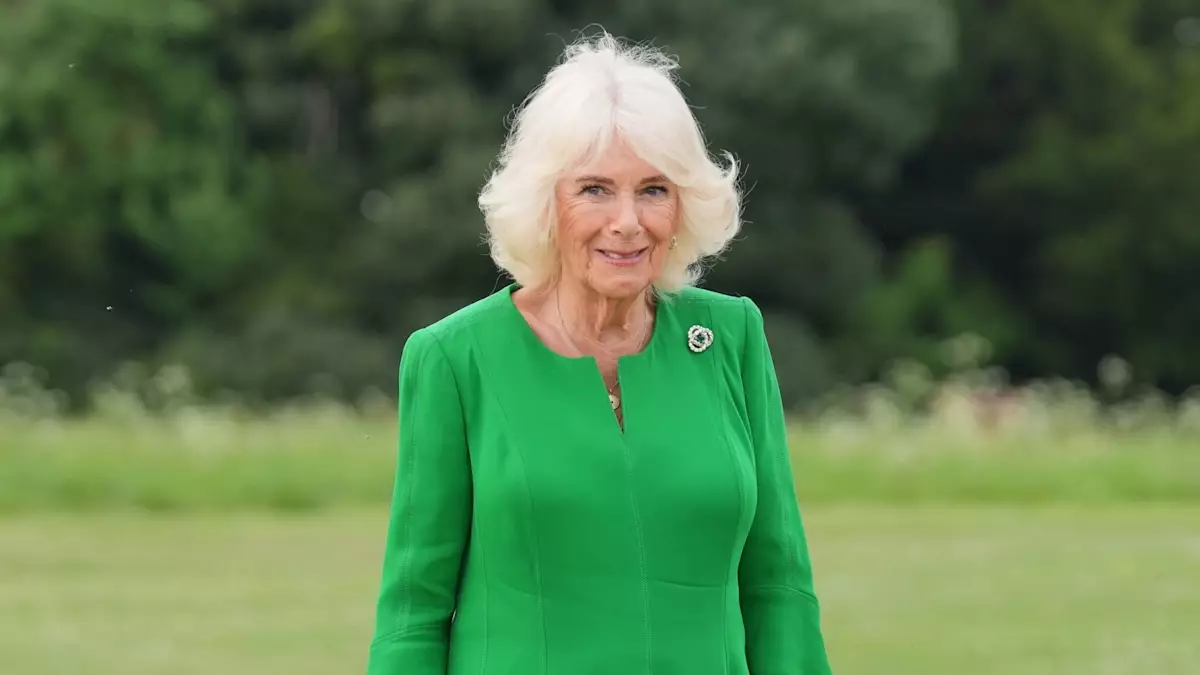In a delightful display of affection that stands out amid the usual pomp and circumstance of royal events, Queen Camilla recently captured the attention of onlookers and royal enthusiasts alike. During a tree-planting ceremony at Windsor Castle, she was spotted playfully tapping King Charles on the bottom, creating a heartwarming scene that left many chuckling and reflecting on the lighter side of royal life. The live broadcast of this charming moment, shared on social media, quickly garnered comments conveying appreciation for the candid interaction between the royal couple.
This incident invites examination not only of its whimsical nature but also of the implications it carries for public perception of the British monarchy. In an age where authenticity is often valued, such genuine interactions can help bridge the gap between the royals and the public, reinforcing an image of relatability that many seem to yearn for. The royal family has long struggled with perceptions of being out of touch, and King Charles and Queen Camilla’s approach—characterized by moments of humor and warmth—emphatically counters that narrative.
Symbolic Significance of Tree Planting
More than just a backdrop for a playful gesture, the tree planting served a deeper diplomatic purpose. Acclaimed worldwide as a tradition among monarchies, this ceremony showcases not only respect for nature but also strengthens international relationships. With the visit of Sweden’s King Carl XVI Gustaf and Queen Silvia, this event harkened back to the long-standing friendship between the UK and Sweden, a friendship maintained through shared cultural and historical values.
The Swedish oak, presented as a gift to mark King Charles’s coronation, not only stands as a living monument but also symbolizes the reaffirmation of bonds that transcend the monarchy itself. Planting trees is an act steeped in tradition, reinforcing alliances and celebrating mutual respect, be it between nations or royal families. The ease with which Camilla and Charles melded their playful affection into this formal setting highlights their understanding of the delicate balance between duty and personal connection.
Humanizing Royal Authority
Queen Camilla’s gesture serves as more than just a light moment in an otherwise routine royal engagement; it reflects her growing role since King Charles ascended the throne in 2022. She has become a personification of the modern monarchy, adept at navigating her responsibilities while maintaining a touch of humanity. By openly displaying affection in a formal environment, she not only provides insight into her personal relationship with Charles but also paints a broader picture of what it means to embrace vulnerability in high stakes situations.
The ability to convey relatability is increasingly significant for modern royalty. In a time when the public demands authenticity, Camilla’s approach suggests a conscious effort to present a monarchy that resonates with the populace. Encouraging images of warmth and normalcy help humanize the royals, fostering a connection that can positively influence public sentiment.
Negotiating the Balance of Tradition and Modernity
While many royal duties are steeped in formality, Queen Camilla’s playful demeanor challenges the often rigid perceptions that surround royal protocol. Her small but meaningful act of affection adds a layer of complexity to the traditional roles of royals, especially given that every gesture is under the discerning eye of the public and media. Yet, it is this very fluidity that can help revive a monarchy increasingly perceived as archaic.
This incident embodies a crucial discourse on the evolving face of royalty in a contemporary society. As the world changes, so too must the institutions within it, and Camilla’s willingness to blend tradition with a fresh take on royal responsibilities is a testament to adaptability. It raises questions about how royals can further engage with their constituents while remaining faithful to their longstanding roles.
In doing so, these moments—tiny as they may seem—become part of a larger narrative, rich with implications about connection, modernity, and the essence of what it means to be royal today. As the monarchy continues to evolve, those seemingly inconsequential moments may just hold the power to redefine its trajectory.

